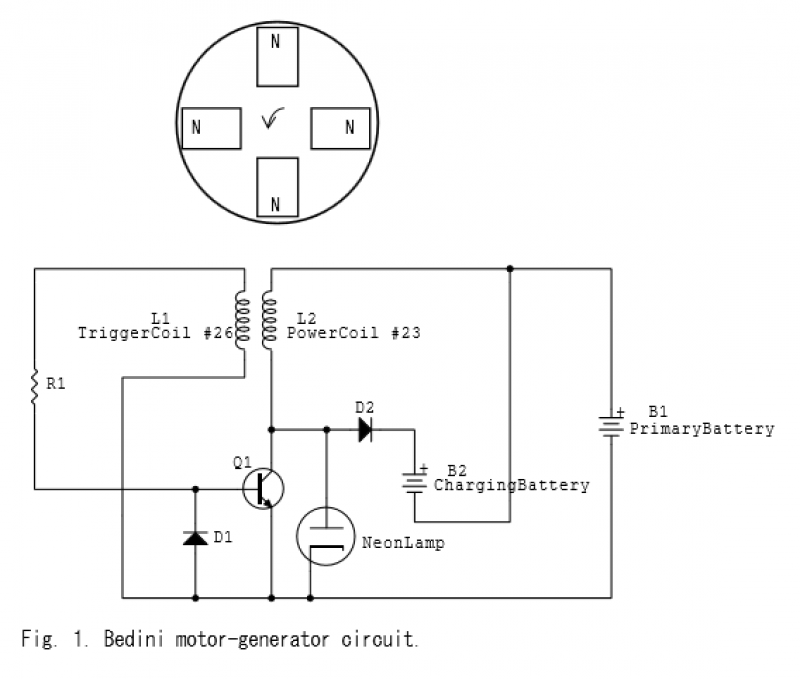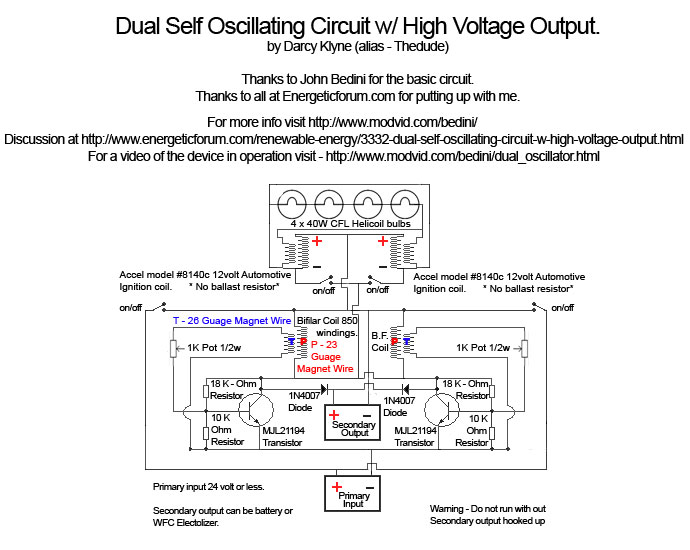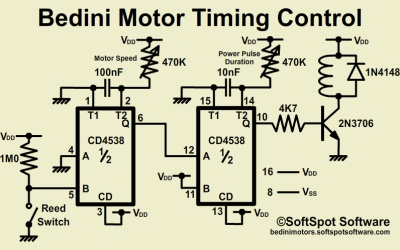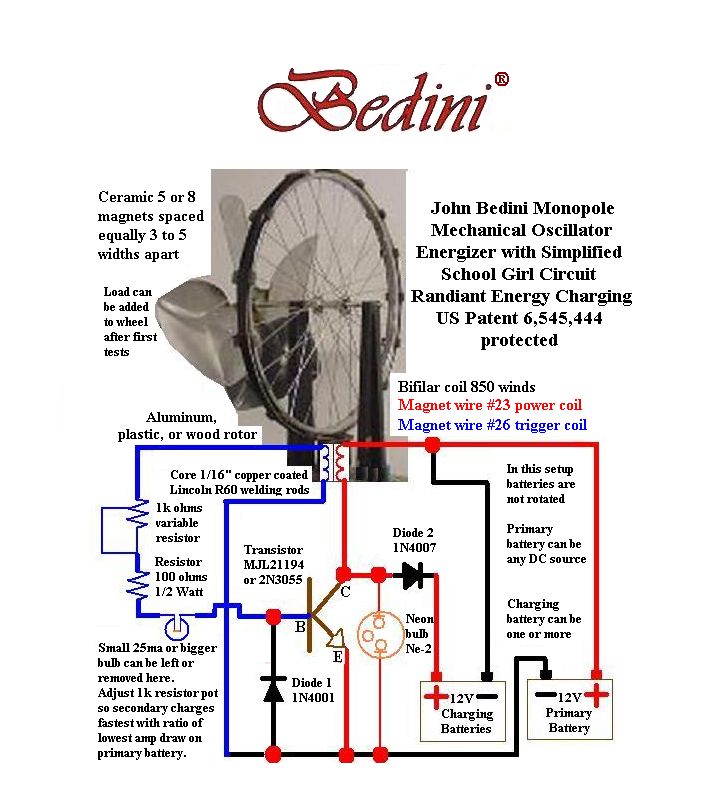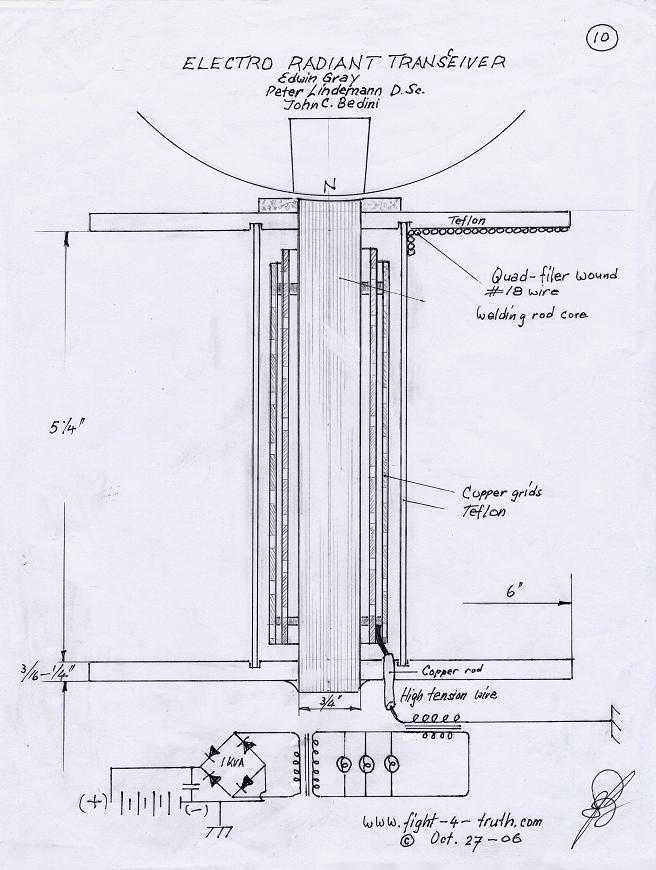
Bedini SSG

The transistor activates, causing the magnet to move away. When the transistor deactivates, the energy stored in the coil collapses, directing its flow into the charging battery. As the next magnet approaches, the cycle repeats. This process effectively recaptures energy for storage in a battery while providing mechanical energy to rotate a wheel. The wheel can be utilized to power devices such as a fan, a small pump, or other low-torque applications. While the concept may seem too good to be true, building and testing the system will reveal its efficiency. Experimentation with components such as magnets, coils, batteries, and transistors is encouraged. The principles behind this setup have been explored by innovators like Bedini, who have mastered various aspects of this technology. It is important to approach this endeavor with a scientific mindset, acknowledging that not every idea will yield immediate success. Continuous exploration and experimentation are essential for advancement in this field.
The described circuit utilizes a transistor as a switch to control the flow of energy between a coil and a battery. The operation begins when the transistor is turned on, allowing current to flow through the coil, which generates a magnetic field. This magnetic field interacts with a nearby magnet, causing it to move away from the coil. The mechanical movement can be harnessed to perform work, such as rotating a wheel that powers low-torque devices.
Once the transistor is switched off, the magnetic field begins to collapse, leading to a rapid change in the magnetic flux through the coil. According to Faraday's law of electromagnetic induction, this change induces a voltage in the coil. The induced voltage is directed into the charging battery, effectively capturing the energy that would otherwise be lost. This regenerative aspect of the circuit is crucial for enhancing overall efficiency.
The system's design must be carefully considered to optimize the interaction between the coil, the magnets, and the transistor. The choice of transistor will affect switching speed and efficiency, while the coil's inductance will determine how effectively it can store energy. Additionally, the configuration of the magnets must be optimized to ensure maximum mechanical advantage during operation.
Experimentation with different component values and configurations is essential to achieve the desired performance. Variations in coil winding, magnet strength, and battery specifications can significantly impact the circuit's efficiency and output. Continuous testing and refinement will lead to a deeper understanding of the underlying principles and improve the overall design.
This approach embodies a scientific methodology, encouraging iterative development and learning from both successes and failures. It is important to recognize that while innovative ideas may not always lead to immediate results, they contribute to the broader pursuit of knowledge and technological advancement in the field of energy conversion and mechanical systems.The transistor switches ON and pushes the magnet away, and at the same time the transistor switches off, the stored energy in the coil is going to collapse and the only way it can go is into the charging battery. The next magnet arrives, and the process starts all over again. And thus by capturing the used energy back into a battery and on top of that delivering mechanical energy to rotate the wheel. The wheel can power a fan a small pump, any other low torque device. To good to be true Just try and build it, and figure out how efficient it really is. Thinker with the components, experiment with the magnets, coil, batteries, transistor etc. Bedini already masters all these variables thus don`t expect a miracle with your first build. Do the science! Thinker and learn from it. There are MANY more to thank for this out of the box thinking and lots of creative new ideas, some work some don`t, (or at least not yet). That doesn`t mean we should ignore it. Do the science. 🔗 External reference
The described circuit utilizes a transistor as a switch to control the flow of energy between a coil and a battery. The operation begins when the transistor is turned on, allowing current to flow through the coil, which generates a magnetic field. This magnetic field interacts with a nearby magnet, causing it to move away from the coil. The mechanical movement can be harnessed to perform work, such as rotating a wheel that powers low-torque devices.
Once the transistor is switched off, the magnetic field begins to collapse, leading to a rapid change in the magnetic flux through the coil. According to Faraday's law of electromagnetic induction, this change induces a voltage in the coil. The induced voltage is directed into the charging battery, effectively capturing the energy that would otherwise be lost. This regenerative aspect of the circuit is crucial for enhancing overall efficiency.
The system's design must be carefully considered to optimize the interaction between the coil, the magnets, and the transistor. The choice of transistor will affect switching speed and efficiency, while the coil's inductance will determine how effectively it can store energy. Additionally, the configuration of the magnets must be optimized to ensure maximum mechanical advantage during operation.
Experimentation with different component values and configurations is essential to achieve the desired performance. Variations in coil winding, magnet strength, and battery specifications can significantly impact the circuit's efficiency and output. Continuous testing and refinement will lead to a deeper understanding of the underlying principles and improve the overall design.
This approach embodies a scientific methodology, encouraging iterative development and learning from both successes and failures. It is important to recognize that while innovative ideas may not always lead to immediate results, they contribute to the broader pursuit of knowledge and technological advancement in the field of energy conversion and mechanical systems.The transistor switches ON and pushes the magnet away, and at the same time the transistor switches off, the stored energy in the coil is going to collapse and the only way it can go is into the charging battery. The next magnet arrives, and the process starts all over again. And thus by capturing the used energy back into a battery and on top of that delivering mechanical energy to rotate the wheel. The wheel can power a fan a small pump, any other low torque device. To good to be true Just try and build it, and figure out how efficient it really is. Thinker with the components, experiment with the magnets, coil, batteries, transistor etc. Bedini already masters all these variables thus don`t expect a miracle with your first build. Do the science! Thinker and learn from it. There are MANY more to thank for this out of the box thinking and lots of creative new ideas, some work some don`t, (or at least not yet). That doesn`t mean we should ignore it. Do the science. 🔗 External reference
